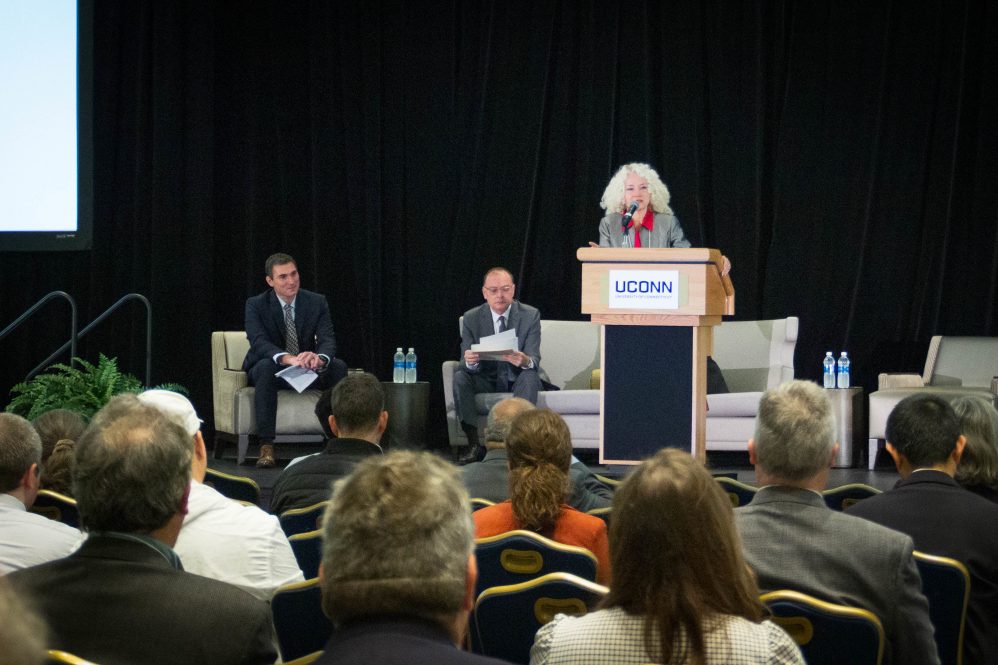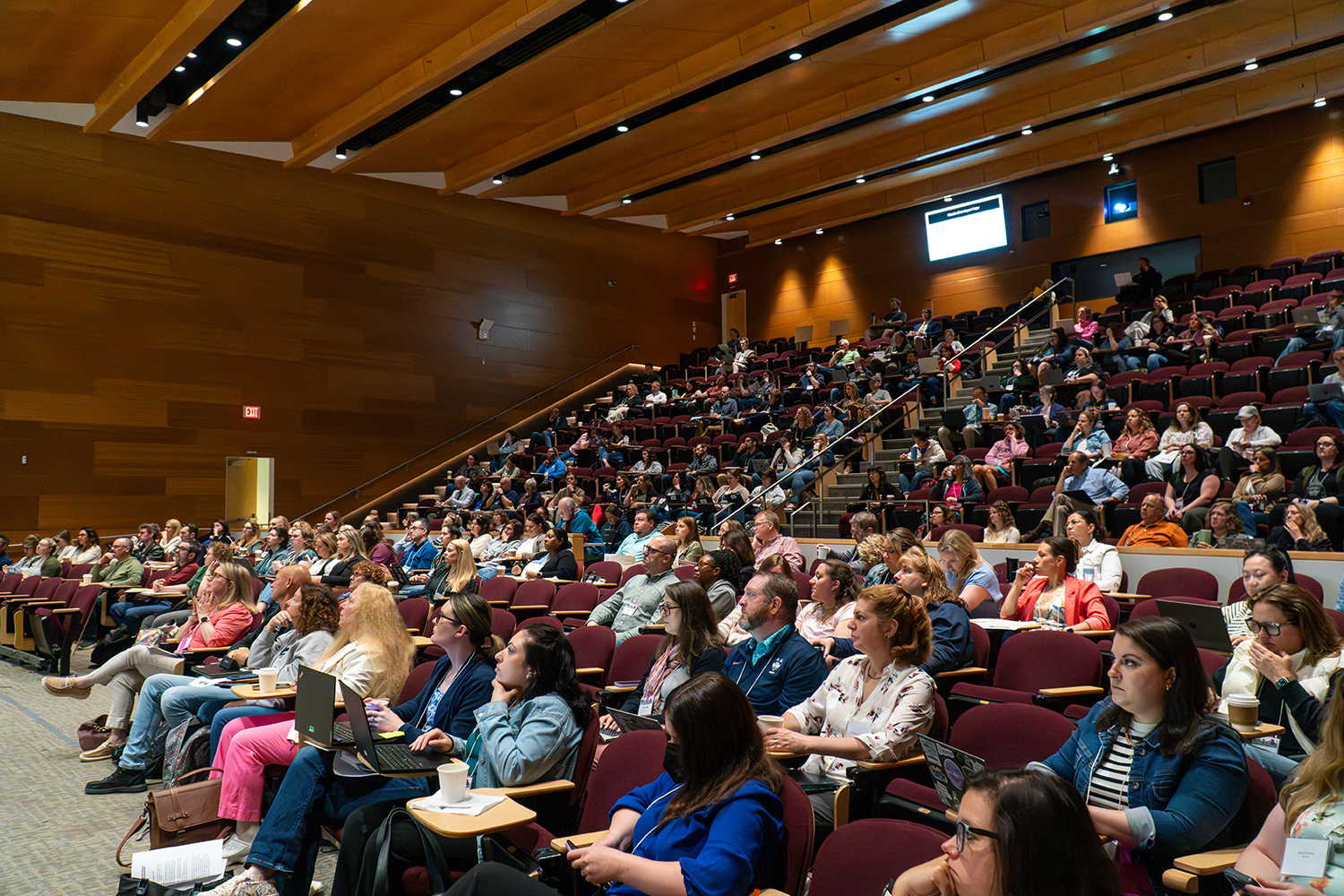Leaders from industry, along with policymakers and elected officials from the state and federal governments met with UConn engineers in Hartford on Monday, Oct. 24 to discuss New England’s electric grid and how it can be made more resilient over the next five years in the face of climate change and geopolitical strain.
“Everything we design at UConn, we design thinking about the future,” said University of Connecticut President Radenka Maric, praising students for their passion and call to action on climate. She challenged the conference to be a force for change. “We have one planet, and we all have to work on a solution,” Maric said.
UConn has long been a leader in energy and grid research, with a particular concentration of expertise in fuel cells and analysis of extreme weather events on the grid. And the University just announced a new partnership with the National Renewable Energy Laboratory (NREL) last week, becoming just the fifth university in the East to partner with the lab. The partnership will provide more opportunities for funding and for UConn students to work with NREL researchers directly.
NREL’s Deputy Lab Director for Science and Technology and Chief Research Officer Peter Green gave the keynote address.
“We want to redesign the grid, knowing that cybercrime is going up, renewables are getting cheaper and extreme weather events are increasing,” said Green. The kinds of research we need to enable this resilient grid, Green said, include ways to harvest and transport hydrogen, better power electronics, and a “circular economy” that includes systems to recycle the materials in everything from batteries to wind turbines so they can be reused.
The circular grid is a key part of Connecticut’s strategy, Department of Energy and Environmental Protection Commissioner Katie Dykes said. DEEP has a whole team focused on battery recycling, for example. Businesses manufacturing and recycling batteries, fuel cells and other components of an advanced electric grid will be a driver of the state’s economy in the future.
Connecticut Public Utilities Regulatory Authority (PURA) Chairman Marissa Gillett discussed the state’s near term grid resilience strategies in more detail. Distributed energy and microgrids, which use small sources of electric storage and generation to keep the power on in a small, critical area such as a hospital or downtown during times when the broader grid fails, are one of 11 tracks Connecticut is pursuing to enhance resilience. Increasing energy storage among small businesses and manufacturers is another. Such storage can be aggregated and then dispatched back to the grid as necessary to balance spikes in demand. These types of efforts demand the kind of engineering know how and innovation that UConn produces.
“UConn is a research powerhouse and the Northeast’s preeminent public research university. Across all disciplines, from engineering to marine science to human rights and the fine arts, our faculty apply knowledge to make a difference in the lives of our students, our state, and our country,” UConn VP of Research Pamir Alpay said.



